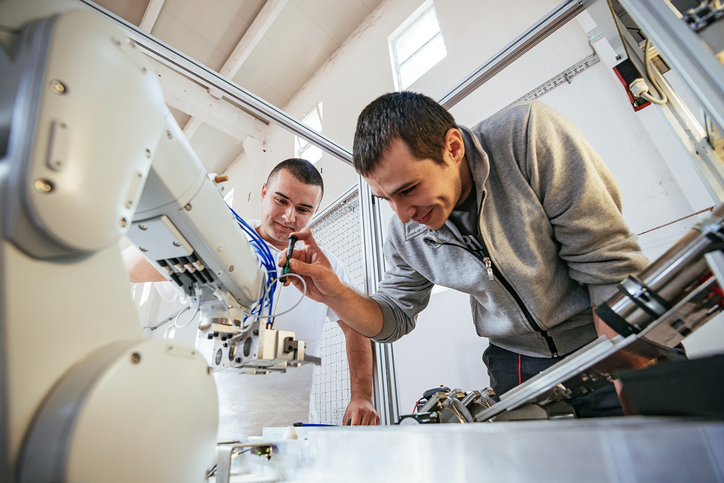Safety is an important consideration for manufacturers, not only from the standpoint of protecting workers but also for protecting the bottom line. Safety incidents involving robots are expensive – an upfront investment in safety equipment will almost always pay off in the end.
Collaborative robots are intended to share workspaces with human workers and are built to be a much safer partner than an industrial robot. However, it’s a common misconception that collaborative robots are safe right out of the box, and there are still safety hazards present.
Industry standards and robotic equipment are both evolving to accommodate greater and greater levels of safety in the workplace.
Collaborative Robot Safety Trends
The rate of technological innovation in the robotics industry has sometimes outpaced the rate of safety standards development. As far as collaborative robots go, there is still much work to be done defining safety protocols as this technology emerges, which is why RIA has been working with the American National Standards Institute (ANSI), as well as the International Organization for Standardization (ISO), to keep up with the changing robotics landscape.
ANSI/RIA R15.06 and ISO 10218 have both defined safety protocols surrounding the use of collaborative robots, but there’s still more to be defined. A recent safety standard, ISO/TS 15066, addresses standard safety procedures when installing a collaborative robot system.
Collaborative Robots are Evolving for Safety
Over the years, collaborative robots have evolved to keep up with safety standards as they’re introduced, but also to improve upon the value of their product. For example, power and force limiting has become a popular method of introducing safety in collaborative robot workspaces. In this scenario, a collaborative robot is prevented from exerting full power and force, so that in the event of contact with a human worker, the risk of injury is significantly reduced.

Many collaborative robots also now deploy a sophisticated system of sensors to slow down operations when a human worker approaches and stop working all together if a human gets too close. Collaborative robots are also becoming easier to program – another safety benefit – as incorrect programming could lead to dangerous interactions with human workers or other equipment.
Safety is being built directly into the collaborative robots themselves. Whether it’s limiting their potential power or deploying sensors to halt operations when a dangerous situation arises, collaborative robots are evolving to become safer and safer.
Safety is an important consideration for all manufacturers. Keeping an eye on important collaborative robot safety trends can help determine if these robots are a good fit in your manufacturing facility.



No comments:
Post a Comment